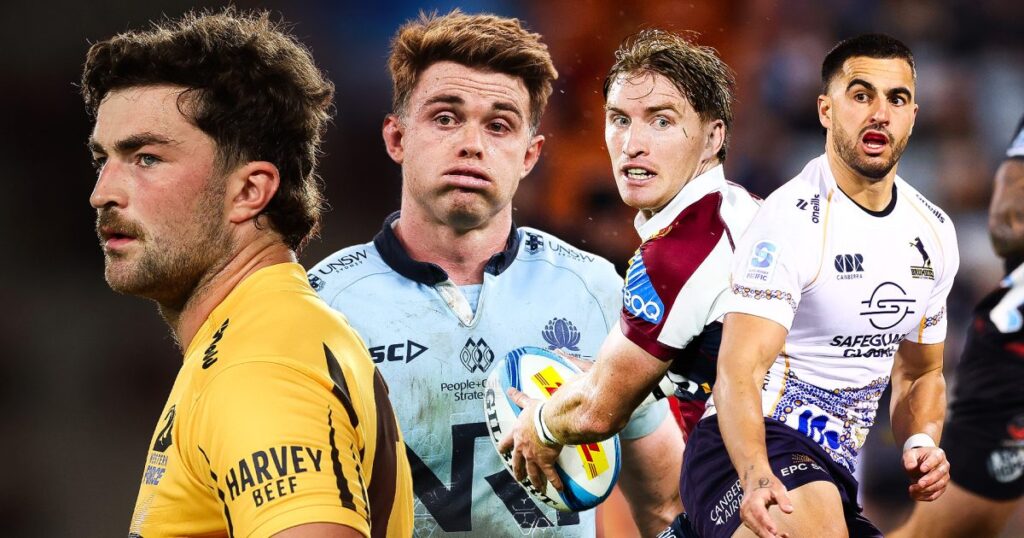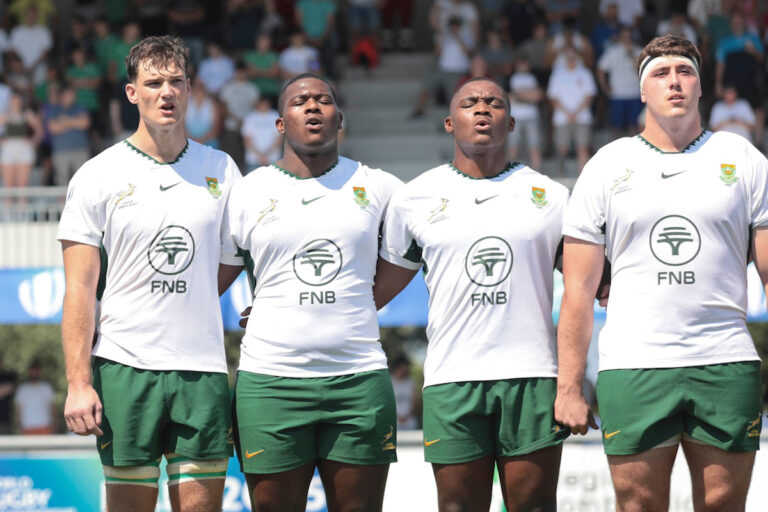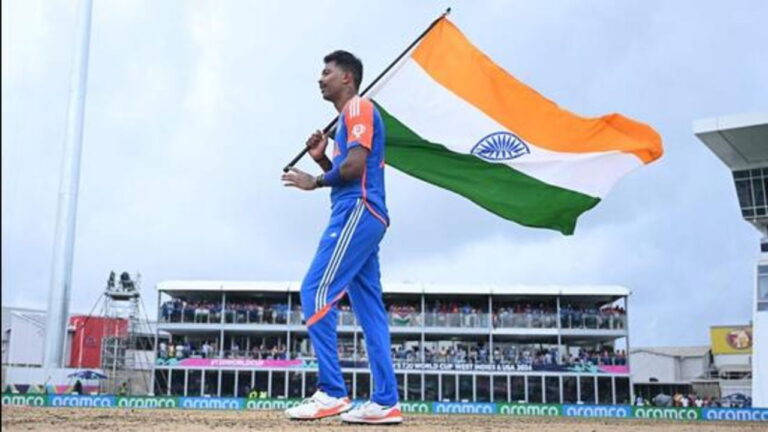

After Saturday night, it is a close on another Super Rugby Pacific regular season, and what a season it was.
It was the best, most competitive, and perilous season for a decade, and some of the storylines were just amazing.
The rise of Moana Pasifika was a bandwagon everyone jumped on, the fall of the Drua was also a big story, as was the resurgence of the Crusaders.
The Aussie sides enjoyed a much better run, having been bolstered by the arrival of the Melbourne Rebels players, as well as a swathe of new signings.
Joe Schmidt has been given a lot to think about ahead of his Wallabies squad selection in just a couple of weeks’ time, because there have been a lot of impressive performances this season.
Nevertheless, with ‘term’ now over, it’s time to deliver some report cards, and despite a good overall season from Aussie sides, this marking did not make for pretty reading.
ACT Brumbies A-
9-wins, 5-losses, points-differential+87
The perennial overachievers of Australian club rugby have yet again proven all the haters wrong with securing another top-three spot heading into finals.
Many thought the men from the bush capital would plateau in 2025, but in typical Brumby fashion, they found flair and a winning recipe in their well-structured systems.
The loss to the Crusaders in the final round of the regular season could just as easily have been a win, proving they truly belong in the top-three breakaway group.
Their regular season, however, has by no means been smooth sailing. The victory in Fiji with an understrength side in round 1 and the hoodoo-breaking win at Eden Park in round 4 were big moments for the ponies, but a loss to the Waratahs a couple of weeks later put a real dampener on their early charge.
Big losses to the Chiefs on their NZ tour, as well as the Hurricanes at home a few weeks before finals, both lead to feelings that the Brumbies may continue to be the bridesmaids, after lacking ruthless edge.
They finished the season as one of the highest scoring teams, in terms of points and tries. They were in the middle of the pack for line breaks all season but struggled to beat defenders, owing to their directness in attack.
Their defence grew as the season progressed, and it looks like they are finally getting comfortable with defence coach Ben Mowen’s rush tactics.
Their discipline was impeccable, ending the season as one of the least penalised sides.
Their breakdown work was also the best in Australia, turning over a lot of opposition ball and conceding very few turnovers themselves.
At set piece, they stabilised this year after a rocky 2024. As far as the Brumbies’ tactics are concerned, they had a ‘bash down the front door’ game plan all year.
They went direct and attacked the middle of the park repeatedly, trying to get sides to buckle, before they allowed themselves to go wide, often scoring after sustained phase pressure.
New recruits Tuaina Taii Tualima, David Feliuai and Feao Fotuaika, all added ballast to this blunt force tactic, and were astute signings by Stephen Larkham, but none of them provided the go-forward recently departed Tamati Tua and Jerome Brown offered.
It’s an area Larkham and his coaching staff will need to recruit for again in 2026 if it’s a style they want to pursue.
Despite being the Aussie side with the highest seeding heading into finals, and despite great seasons from departing Tom Hooper, Noah Lolesio, re-signed Nick Frost, James Slipper, and their stalwart captain Allan Alaalatoa, the side has still struggled at times to handle the power game of the top Kiwi sides.
Overall, a better season than many expected, but nevertheless a strong season for a team that is still struggling to find that ruthless edge, an asset which the competition-leading Chiefs have in spades.
Queensland Reds B-
8W, 6L, PD+54
It’s been a season where the Queenslanders fell short of expectations, and where their game management was questioned by punters and pundits alike.
Hopes were high amongst fans as the Reds were the side with the most pre-season games, allowing the team to bed down their game plan and tactics well before the season, but injuries hit the group hard, and that took the polish off the star-studded roster.
Matt Faessler, Liam Wright, Josh Flook, Seru Uru, and Harry Wilson were the biggest losses for Les Kiss’ men throughout the season, with Wilson now nursing a fresh injury heading into the finals and the other three forwards still on the sidelines.
Flook, however, made a stellar return in the round-16 thrashing of Fiji, but his stand-in, 20-year-old Dre Pakeho, was one of the best talents unearthed this year.
The young centre has raw stats to rival incumbent Wallaby centres Hunter Paisami and Len Ikitau, and looks to have a bright future ahead with the Reds.
In the forwards, Joe Brial has been the standout in the backend of the season, imbuing the pack with some much-needed starch, and provided much-needed go-forward in the absence of Wilson and co.
Wilson’s lengthy absence meant his partner in crime, Fraser McReight, was nowhere near his best in a season where the Reds needed him to be outstanding, but his form has corrected course at the right end of the season, and he will have to prove himself again this weekend in the finals.
They finished the season as one of the most accurate goal-kicking sides despite continuously opting against kicks at goal.
They mostly sat in the middle of the table for linebreaks, defenders beaten, carries, and penalties conceded.
Their defence was their biggest saviour in a season where the attacking finesse was just a little off the mark; they tackled around 90 per cent in every game and missed very few tackles.
However, their breakdown pressure without the ball, their breakdown security with it, were both not up to scratch, often losing too much ball at the melees.
Similarly, their set piece was a shambles for large parts of the season, particularly the lineout and maul.
Their scrum was stabilised by Jeffery Toomaga-Allen and Alex Hodgman, the former has just re-signed for the Reds, and it is a crucial one for Kiss and his men.
The Reds’ tactics changed significantly throughout the season. Early in the season, they had a Harlem Globetrotters approach, throwing offloads and tip-passing regularly.
This came to a rapid halt after getting spanked by the Crusaders in round 4, where the men from Christchurch turned loose carries and passes into counter-attacking magic, sending the Reds home with a 43- 19 defeat.
After this, they began to limit offloads and go more direct, but in a team with new recruits and a long injury list, they were often inconsistent between games and during matches.
Similarly, a big change came late in the season as the men from Ballymore hadn’t taken a single penalty goal shot until the second last round of the regular season.
It was a strategy that appears to have cost them close games against the Chiefs and Brumbies in the second half of the competition.
Some may speculate that Kiss’s connection to the Wallabies’ top job distracted him for much of the season, and by the sounds of the discussions had between Rugby Australia and the Reds, it doesn’t seem like a stretch to imagine it did.
The Reds, like the Brums, have lacked killer edge and an ability to ice the clutch moments. A late run of losses saw them steadily lose touch with the top three, and it’s a reflection of the divide in class between the top three and perhaps now the Hurricanes as well, and the rest of the sides.
It’s been the Reds’ inability to kick on from last year that has taken the shine off this side’s image; only an upset win against the Crusaders in the quarter final could change the feeling of ‘what could have been?’
Western Force C
4W, 9L, 1D, PD-114
Optics, expectations, and how they are often juxtaposed with the raw numbers are all part of the theatre of sport, and the Force’s season is no exception.
Four wins, nine losses and a draw against the Hurricanes make for very poor reading, but there was a different feeling about this Force side.
As in most other years, the Force were dealing with a lot of roster turnover, which tends to mean the cohesion of the group is tested anew and ultimately found wanting.
This year, however, they started the season brilliantly, beating Moana Pasifika, the Brumbies in Canberra, and then having a 28-24-point thriller against the Reds in Brisbane.
However, as is the case with new combinations, as the season drew on, the depth was tested, and yet again it proved too difficult to head over to New Zealand carrying a load of injuries and untested combinations.
The Force made their last stand in round 10 when they fought a vicious battle against a hungry Hurricanes side in Perth, resulting in a 17-all draw after the season’s first Super Point.
Considering the form the Canes are now in heading into the finals, that draw looks even more impressive.
The Force finished the season as one of the lowest point-scoring teams. They were towards the backend as well for linebreaks, defenders beaten, and carries.
They were one of the worst sides defensively, despite usually making the most tackles each week.
This pressure meant they were one of the most penalised sides and the vicious cycle of no ball, high tackle counts and poor breakdown pressure meant the side could rarely get a foothold in games.
As far as tactics are concerned, the Force initially appeared to be playing a very good territory game, kicking long, playing nothing in their own half and backing their defence.
Initially, this was working; fresh bodies could sustain the consistently high tackle counts, but this naturally took its toll and ended up hurting them deep in the season.
Captain Jeremy Williams and Darcy Swain were two of the best lineout operators across the competition all season, securing their own ball and stealing others’ throws at will.
Why coach Simon Cron and co didn’t change their tactics is a mystery, because their maul was also a weapon, which saw them score plenty of tries.
Apart from the macro tactics, the Force looked very well drilled, had great shape and genuinely looked like a side playing with freedom in a good, structured attack.
And as for the players, you must start upfront with Marley Pearce. Before an injury-laden backend of the season, the young prop was bashing over the gainline, tackling the house down, and scrummaging well.
Ben Donaldson at No.10 grew a lot in the off-season and under the tutelage of Schmidt, and he showed great confidence in his skillset once again.
Often, he was seen taking on the line, putting players through holes and staying in games when the going got tough.
Dylan Pietsch and Harry Potter both had exceptional performances on the field. Potter was extraordinary in the way he spotted space, broke tackles and scythed through the lines; his undeniable form will see him feature in the Wallabies.
However, no one at the Force made a bigger impact than Carlo Tizzano. The hometown hero was colossal for his side, his newfound carrying, passing, and support line running were out of this world, and he has been in relentless form.
The Force would not have done as well as they did without Tizzano, especially in this type of form; he was talismanic for the sea of blue.
Despite some genuinely top-notch seasons from certain players, the same old problems plagued this side, poor connection in defence, low breakdown pressure, and, at times, immature game management, just meant they were never truly in the finals run.
With a swathe of re-signings, a maturing playing group and developing talent, the Force look to make a real push in 2026. But 2025 was just a rinse and repeat of recent years in terms of roster turnover and instability, they’ll be better for it heading into pre-season.
Waratahs C-
6W, 8L, PD-134
Where does one start with Australia’s rugby homeland?
The fact of the matter is that the side outplayed their 2024 selves considerably, only two wins last year in a season that was riddled with disappointment, 2025’s Tahs were better, beyond a shadow of a doubt.
People took the influx of top-tier talent as an automatic key to success, but the problem at the Tahs has been their systems, not a lack of star power.
The win against the Chiefs in round 9 was a much bigger deal than their win against the Crusaders in 2024.
The table-topping Chiefs were put under immense pressure in a targeted Waratahs assault, whereas in 2024, the Crusaders were flying low, hit heavily with injuries and dealing with large roster turnover.
As for the Tahs this year, they managed to make their home ground at Allianz Stadium a fortress for much of the season, but perhaps it was the emotional load of having to perform at home that left them depleted on the road.
Their away form was truly atrocious, copping beltings from Moana Pasifika, Hurricanes, Blues, Reds, and Brumbies.
Their win against the Brumbies in round 6 was a very unexpected upset, and it gave the impression that perhaps they could mix it with the top teams, but in the end, it was a false dawn.
As far as the season goes, they finished as one of the lowest point and try scoring teams in the comp.
They carried very few times compared to many sides and made very few metres with them.
This means it will serve as no surprise that the men from Daceyville beat very few defenders and made some of the fewest linebreaks all season.
Their defence and discipline were all middle-of-the-pack ratings, and had it not been for the blowouts away from home, their points differential would actually have looked half decent.
Their poor numbers on either side of the ruck and middling set-piece performances meant they had very few go-to weapons across the field, even the scrum struggled at times.
As far as tactics and player roster go, the arrivals of Taniela Tupou, Rob Leota, Isaac Aedo Kailea, Joseph-Aukuso Suaalii, and Andrew Kellaway did not deliver the stark boost many were expecting.
The Wallaby-laden side was heavily dependent on midfield crash balls, often done exceptionally well by the Tahs’ best player of the season, Langi Gleeson.
The trouble was, they had no connection with their carriers, often resulting in cheap turnover ball for the opposition.
The new signings meant the Tahs had one of the biggest and heaviest packs, which covered up a lot of the cracks created by their predictable and one-dimensional attack structure.
Their X-factor players like Angus Bell, Gleeson, and Suaalii could use their unique skills to get the side over the tryline, despite being well-marked.
However, as soon as one of those players were on the ground, and the phase count got past three, the Tahs looked lost and confused, at times running into each other and cutting off running lines.
A lot of work was done in the dojo during the pre-season to get players loving contact, but even their defence faltered late in the season due to the lack of pressure being put on opposition breakdowns.
The X-factor players and the new signings meant counterattack was the Waratahs’ best attacking weapon.
You only need to look at the 120m try the Tahs scored against the Chiefs to see this is clear as day.
As far as players were concerned, the emergence of Teddy Wilson was a welcome arrival by all Tahs supporters. Suaalii was obviously outstanding, but he has a lot to work on if he wants to play fullback at Test level.
Leafi Talataina was an awesome get from the Melbourne Rebels; his size and aggression will be a massive asset to the Tahs in seasons to come.
Nevertheless, the team never felt like a unit, and questions must be asked about the attack structure because it barely grew all season and rarely, if ever, delivered potent rugby.
The fact is the Tahs were saved and undone by their influx of stars, but a brand-new coaching staff, of course, didn’t help with the cohesion of the side.
If it hadn’t been for the six wins, you’d say flush the year, but because of those wins, the analysis and internal reflection almost must go deeper.
The Tahs were better in 2025 than in 2024; that much is clear, but big shifts in how they see the game must happen in the tactics for 2026 if they are to truly kick on, because not all their issues were due to new players; some tactics were very questionable.






